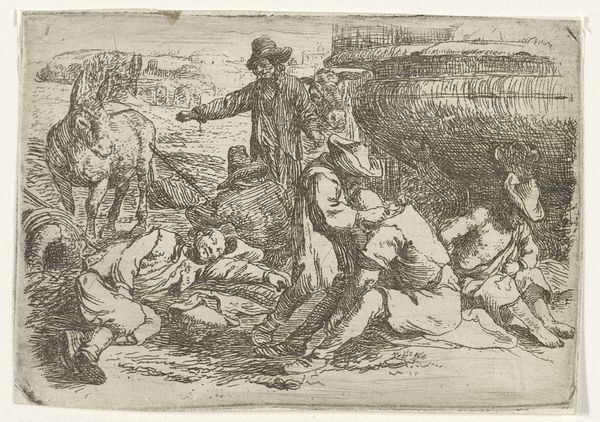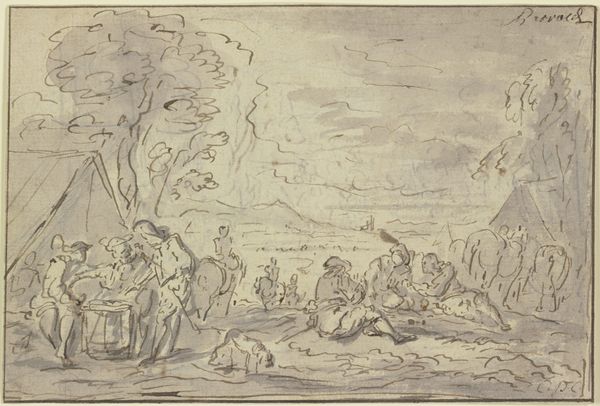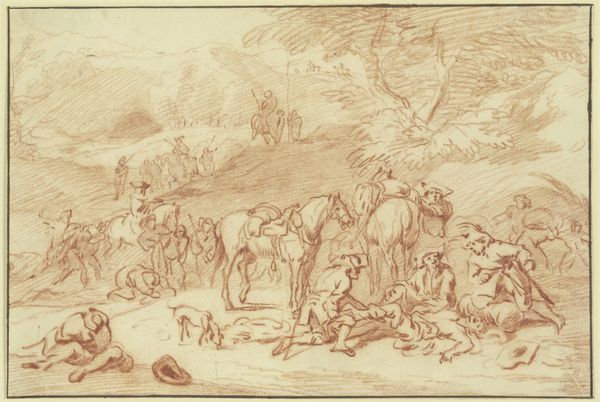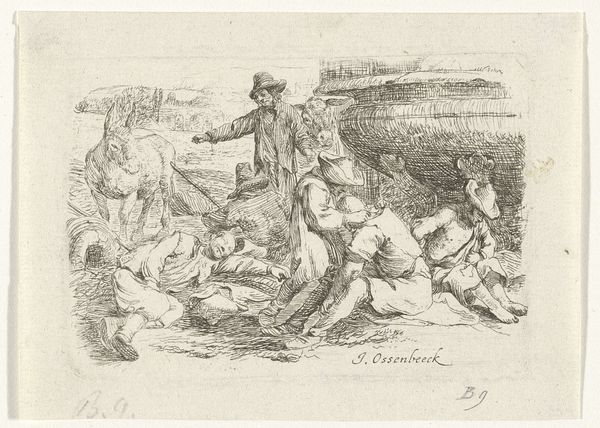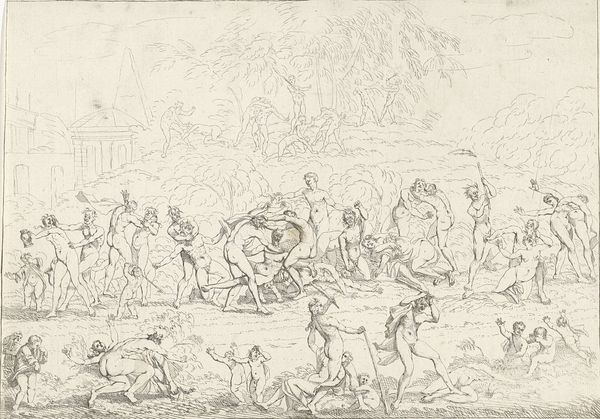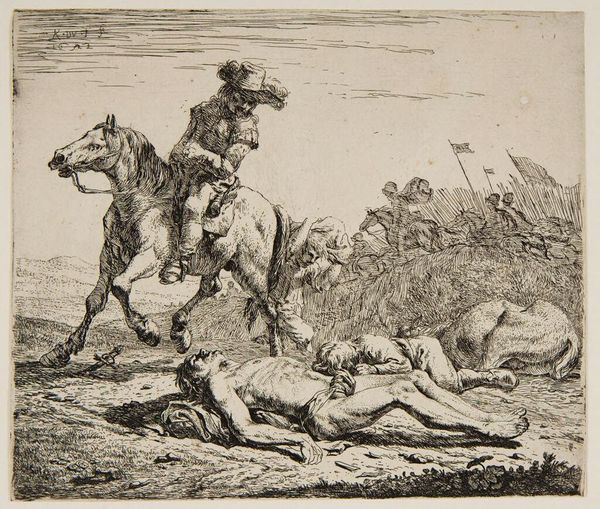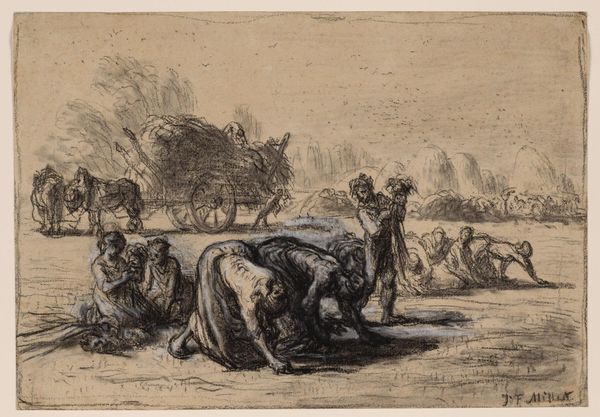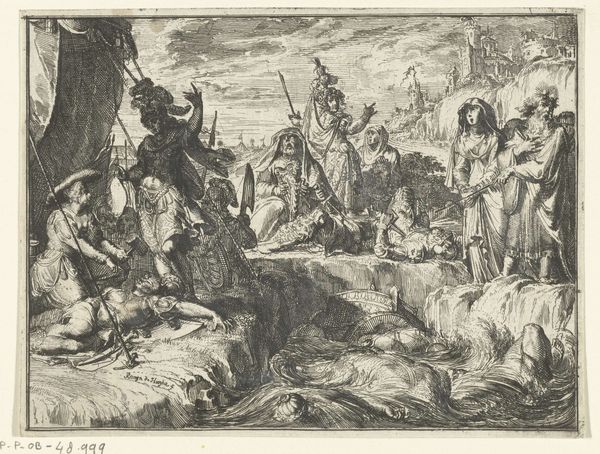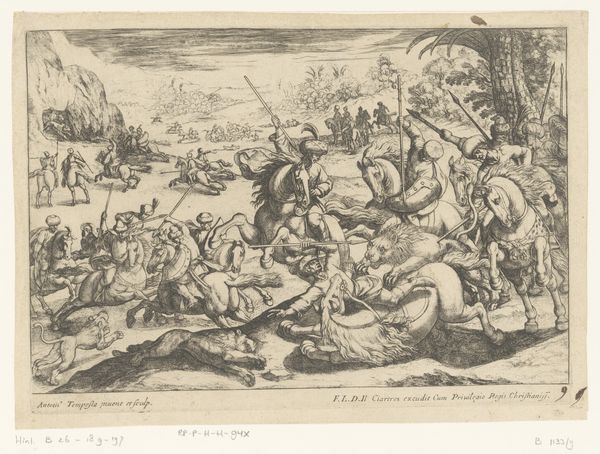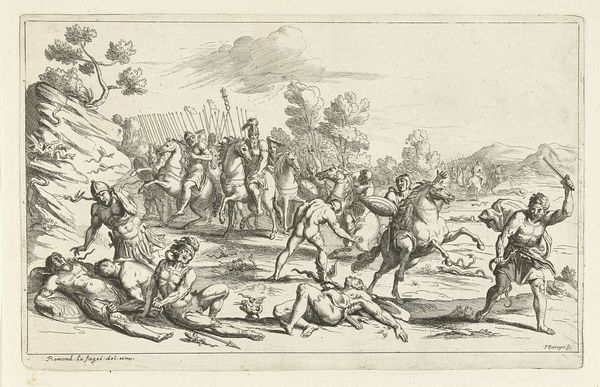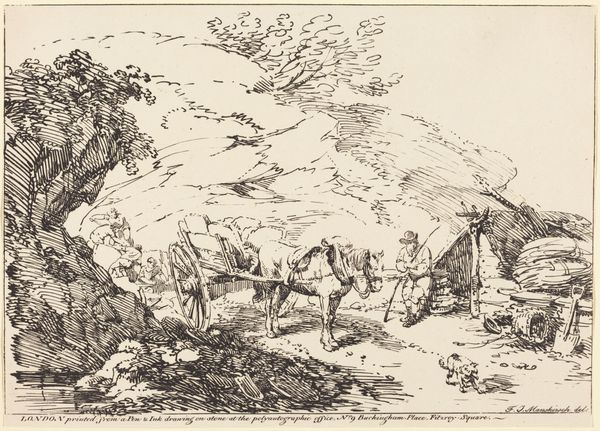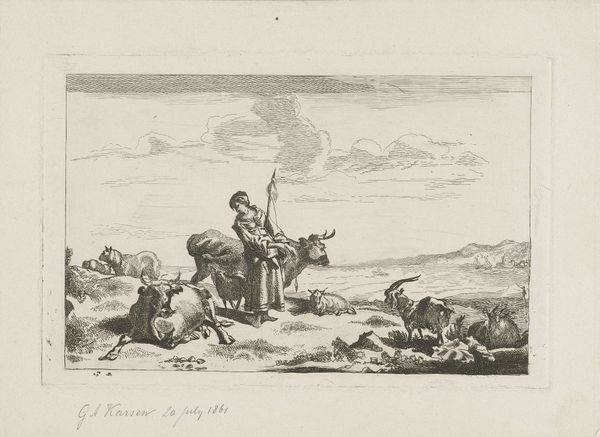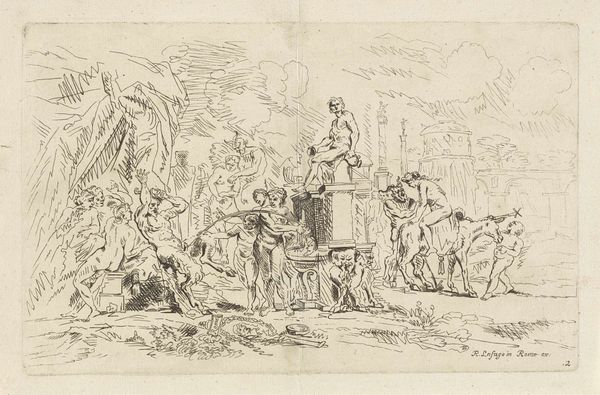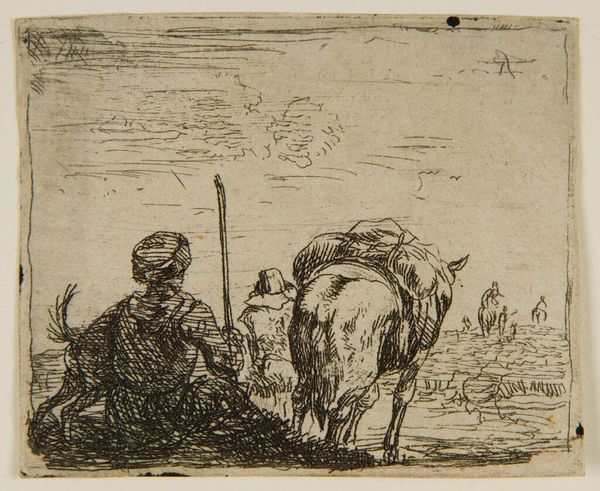
drawing, print, paper, ink, chalk, pen
#
drawing
#
ink drawing
#
narrative-art
#
pen drawing
# print
#
pen illustration
#
pen sketch
#
landscape
#
paper
#
ink
#
chalk
#
france
#
pen
#
genre-painting
#
history-painting
Dimensions: 210 × 357 mm
Copyright: Public Domain
Curator: This ink and chalk drawing, titled "Cavalry Surveying the Wounded," is an intriguing piece with a narrative element and some pretty clear socio-political themes that arise upon reflection of the scene's cultural moment. What strikes you first? Editor: The rapid lines of the drawing – you can almost feel Parrocel’s hand moving across the paper. The way the figures are rendered so quickly and in such high numbers...It does give it a chaotic feel, almost like a document of immediacy. What do you see in the material choices and technique here? Curator: Look at the weight and distribution of ink. The density pools where the suffering is most concentrated. Chalk creates depth and diffuses the focus on those further away. This combination isn't just about aesthetics; it reflects a calculated approach to presenting warfare. What would such choices communicate to an audience accustomed to more heroic, polished depictions of battle? Editor: It challenges the glorification, almost. The roughness of the materials underscores the rawness of the scene itself, demystifying any kind of heroic, classical ideal of war. But isn't it still just a drawing? How impactful could that have been? Curator: Think about print culture. Drawings like this are often studies for prints, a reproductive medium intended for mass consumption. Each print bears the trace of the artist's hand, and through each distribution, reinforces a very material social commentary, circulating ideas far beyond the elite art world. Does this influence your thinking on the work now? Editor: Definitely. It changes the perspective, understanding its place in shaping public perception through relatively accessible, mass produced prints of the time. Curator: Exactly. Focusing on the material aspects opens a dialogue about power, production, and the social circulation of ideas surrounding war. Editor: I hadn’t thought about it that way, seeing the material choices as critical to understanding the political purpose and reach of the image. Curator: Looking at art this way always expands the conversation.
Comments
No comments
Be the first to comment and join the conversation on the ultimate creative platform.
